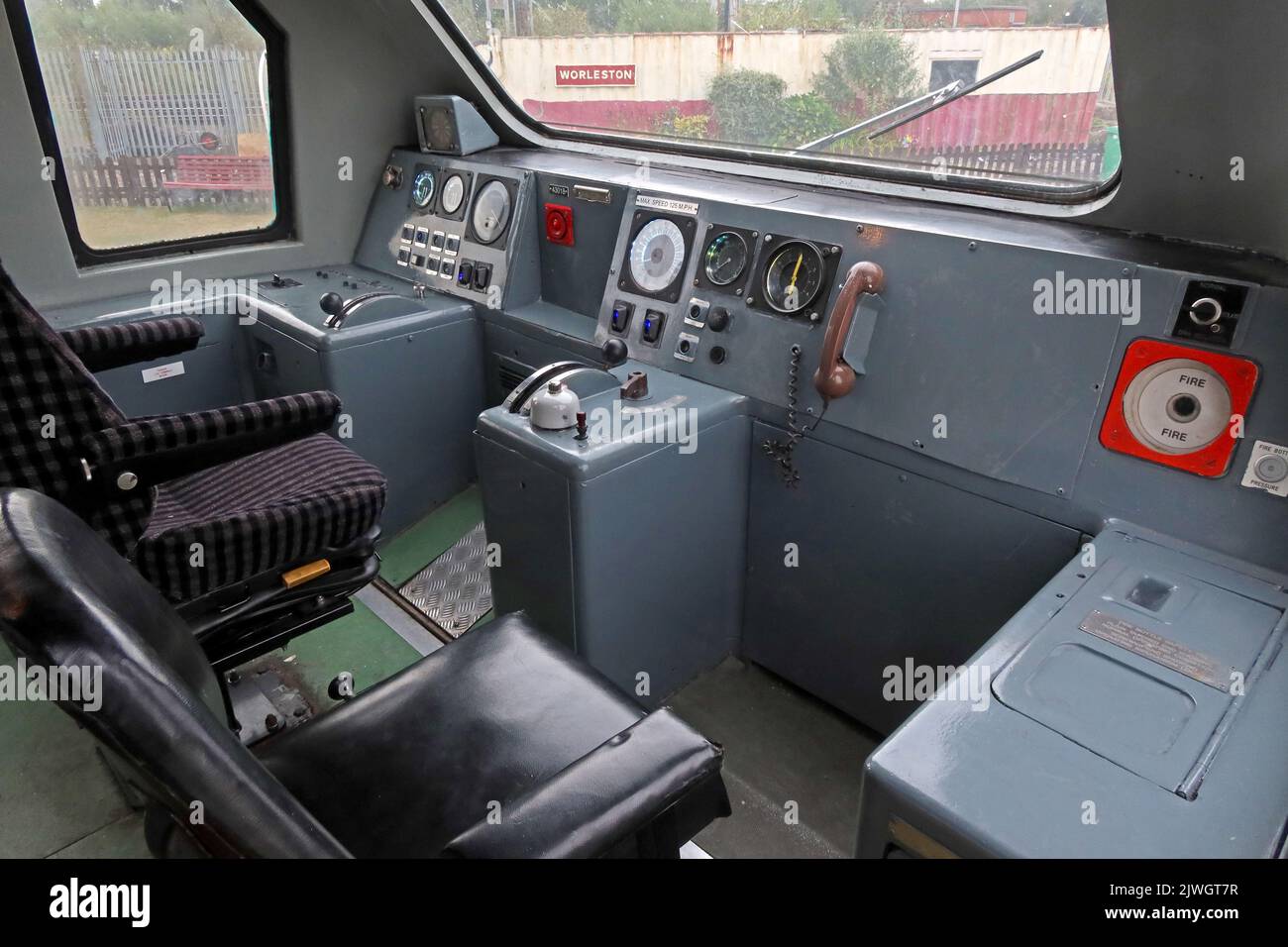APT Advanced Passenger Train drivers cab - London-Glasgow route , preserved at Crewe, Cheshire, England, UK, CW1 2DB

Image details
Contributor:
Tony Smith / Alamy Stock PhotoImage ID:
2JWGT7RFile size:
57.1 MB (1.9 MB Compressed download)Releases:
Model - no | Property - noDo I need a release?Dimensions:
5472 x 3648 px | 46.3 x 30.9 cm | 18.2 x 12.2 inches | 300dpiDate taken:
3 September 2022Location:
Crewe,Cheshire,England,UK, CW1 2DBMore information:
The Advanced Passenger Train (APT) was a tilting high speed train developed by British Rail during the 1970s and early 1980s, for use on the West Coast Main Line (WCML). The WCML contained many curves, and the APT pioneered the concept of active tilting to address these, a feature that has since been copied on designs around the world. The experimental APT-E achieved a new British railway speed record on 10 August 1975 when it reached 152.3 miles per hour (245.1 km/h), only to be surpassed by the service prototype APT-P at 162.2 miles per hour (261.0 km/h) in December 1979. Development of the service prototypes dragged on, and by the late 1970s the design had been under construction for a decade and the trains were still not ready for service. The election of Margaret Thatcher brought matters to a head and she alluded to funding cuts for the project. Facing the possibility of cancellation, BR management decided to put the prototypes into service, with the first runs along the London-Glasgow route taking place in December 1981. The result was a media circus when every problem large or small received front-page coverage and the entire project derided as an example of BR's incompetence. The trains were withdrawn from service again by the end of the month, to the great amusement of the press. The problems were eventually solved and the trains quietly reintroduced in 1984 with much greater success. By this time the competing High Speed Train, powered by a conventional diesel engine and lacking the APT's tilt and performance, had gone through development and testing at a rapid rate and was now forming the backbone of BR's passenger service. All support for the APT project collapsed as anyone in authority distanced themselves from what was being derided as a failure. Plans for a production version, APT-S, were abandoned, and the three APT-Ps ran for just over a year before being withdrawn again over the winter of 1985/6. Two of the three sets were broken up